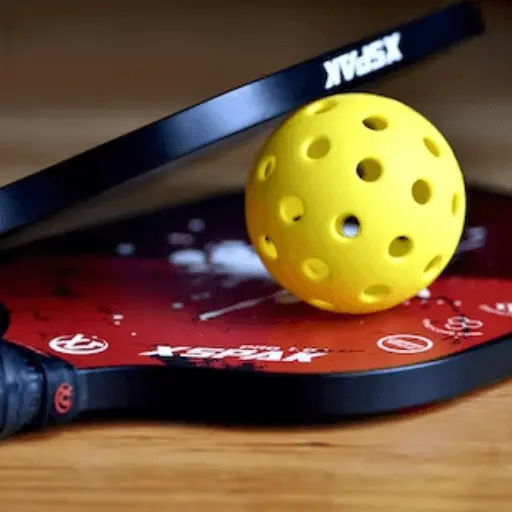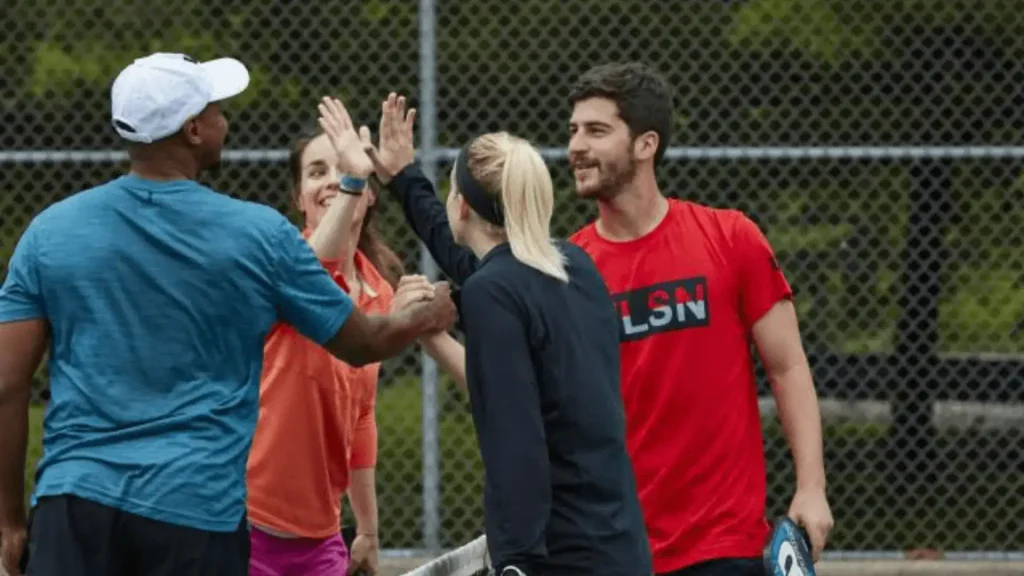What Are The 10 Rules Of Pickleball? The Ultimate Expert Guide For Beginners

Do you know what are the 10 rules of pickleball? According to Pickleball USA, pickleball has taken the status of the popular and fastest-growing sport.
In the USA, it’s quickly becoming a favorite and healthy activity for those looking for some fun and competition or a leisurely weekend hobby. If you’re searching for how to play pickleball and what are ten rules of pickleball then you’ve come to the right place!

Pickleball Rules in PDF
Here are the comprehensive and simple pickleball rules in PDF format to understand the rules of pickleball in a better way.
Rules Summary
1. Scoring: The serving team needs 11 points to win by a lead of 2. Pickleball games can be followed by 15 or 21 points.
2. Serving Sequence: Serve from the right if the score is even, left if it’s odd.
3. Serving: Underhand serve below the waist.
4. Baseline Serve: Serve diagonally from the backline over the net.
5. Serving Player: Serves until a fault, switching sides after scoring.
6. Points: Only the serving team earns points. The opponent serves after two faults.
7. Double Bounce Rule: The ball must contact the ground once on each side before hitting.
8. Non-Volley Zone(NVZ): The serving ball must not land in the 7-foot area near the net. After serving, the ball can land in the kitchen but the serving team must move out.
9. Serve Beyond NVZ Line: The serving ball is not allowed to land in the non-volley zone or its line.
10. Non-Volley Zone Hits: Fault if hitting NVZ or serving into the kitchen without bounce.
Detailed Description What are the 10 rules of pickleball?
To learn pickleball effectively and in a professional manner, we’ve to understand what are the 10 rules of pickleball and how can we become masters in this game by learning these rules. In this article, we’re discussing what are the 10 rules of pickleball in detail.
Rule#1 Scoring Rule
In pickleball scoring rules, the serving team scores point; 11 points are required to win the game. A team needs 2 points to win. Traditionally, the game ends when one player or team reaches 11 points at first. However, the winner has to win by at least 2 points. For instance, if a pickler secures 11 points, but his opponent gets 10 points, the game carries on.
The game score can reach 15 or 21 points. While playing singles games, 11 and 15 are the common points. On the other hand, 15 and 21 points are the most common in doubles games.
Rule#2 Serving Sequence Rule
The serving player for a team starts to play from the court’s right-hand side whereas the score considers an even number. An odd score indicates when the server plays from the left.
Rule#3 Serving Rule
The service should be underhand and below the waist of the player. If the serving player doesn’t follow the rule, it’ll be considered a fault.

Rule#4 Serving Must Be Done At The Baseline
Before serving the ball, ensure you are serving it from the baseline, the backline of the court. The serving must be underhand and below the waist and hitting the ball diagonally over the net on the other side of the court.
If we don’t obey these rules, it will consider a fault, and the service will give to the opponent team or directly to the other side if you are playing the singles game.
Rule#5 Serving Player Serve Until He Commits Fault
The player’s service carries on until he commits a fault. It’s a violation of the rule and stops the game. The first serving is made from the right side; if the serving player scores a point, that player serves from the left side.
Rule#6 Points Are Only Earned By The Serving Team
The first-serving team in the game has only one chance to serve before they commit a fault. However, the opponent team gets a chance to serve (until that team makes two faults). Each team has one fault chance after the conclusion of this round before the service is switched off.

Do You Know?
There’re 36.5 million people who play pickleball in the USA and the average growth of the game is 11.5% in the last 5 years. In the USA, there’re 10,320 pickleball courts to play this popular sport.
Rule#7 Double Bounce Rule
There’s a double-bounce rule. Before returning the ball, each team must let it bounce once. After these two bounces, you can hit the ball before it bounces (a volley) or of a bounce.
Rule#8 Non-Volley Zone Rule
Non-volley zone(NVZ) is an important rule in pickleball. Non-volley zone is a specific and 2-dimensional area of the court that extends 7 feet from the net on each side. While serving, the pickleball must not land in the non-volley zone.
After the serving, the ball can land in the kitchen. We should remember that the serving will shift to the opposing team if the serving ball lands in the non-volley zone and requires going beyond it.

Rule#9 The Serve Must Land Beyond The Non-Volley Zone Line
When a pickleball touches any line of the court, it will be marked as “in,” and play continues. In general rule, the only relaxation is that the serving ball must not land in the non-volley zone and its line.
If the serving ball lands in the non-volley zone or its line, the service will be known as “out.” The serving player will have to commit a fault for losing the rally.
Rule#10 Only Ground Strokes Are Allowed In The Non-volley Zone
A serve that hits the non-volley zone, the kitchen is considered a fault. The same thing applies to the player but after one bounce you can do it.
Conclusion
Pickleball is also based on its simple and amazing rules that make this game more interesting and popular among all ages people. Through this article, we’ve learned what are the 10 rules of pickleball and how we can become experienced players.
